All photos by Alessandro Gerelli at the 2008 Mille Miglia.
Text by Pete Vack
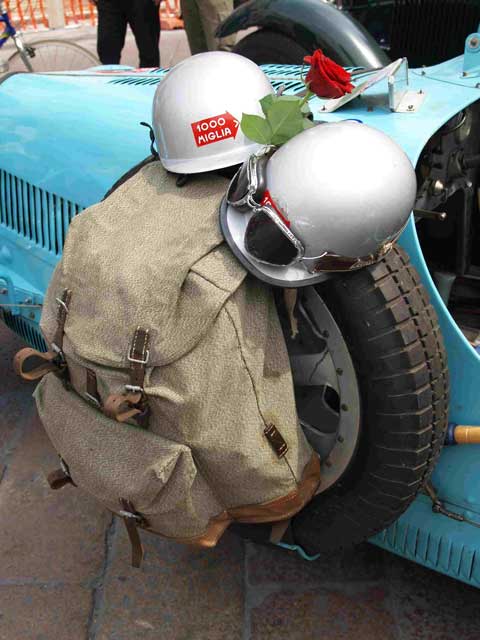
Bugatti still life.
In 1928 Count Aymo Maggi, Franco Mazzotti and Giovanni Canestrini, three of the four founders of the Mille Miglia, traveled to Paris to meet with a variety of French automobile companies.
In 1926, formula racing had reached a peak and the major manufacturers were no longer racing. But at the same time, a new sports car race at Le Mans France was growing in popularity, and French cars were doing very well in the new 24 hour sports endurance races. It was under these circumstances that the Mille Miglia, a thousand mile race around Italy, was begun in 1927.
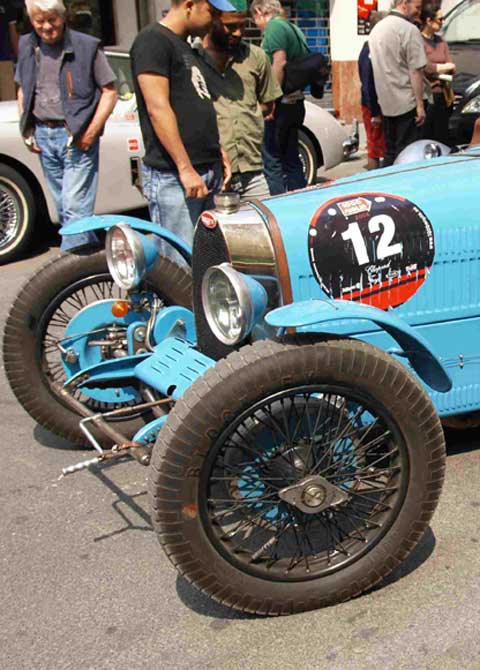
1927 Bugatti Type 37A.
The first race, won by an O.M. overall, also had a 750cc class which was dominated by the tiny Peugeots, which took a day and a half but took the first three positions in class. But only one Bugatti was entered–and it did win the 1500cc class, but there should have been many more such entries. It was decided that a public relations visit to France was in order; hence the trip to Paris in early 1928 by the event’s founders.
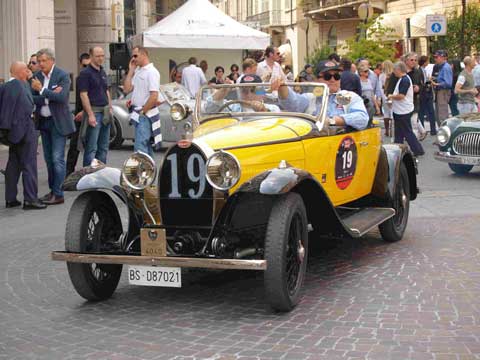
1930 Bugatti Type 40A
Despite the diplomacy, France didn’t send many cars to the 1928 event. But the ones that did enter provided a serious threat. Tazio Nuvolari in a Bugatti Type 43 drove among the leaders but eventually the car slowed. Brilli-Peri took his Type 43 to sixth overall. A team of Salmons entered the 1100 class but failed to finish.
For some reason or reasons unknown, French cars did not play a significant role in the 1929 Mille Miglia. A team of six four cylinder Citroens entered in the Utilitarian class all finished in a row, placing fifth through tenth in class in 1930, and a Type 35 B Bugatti finished 18th overall.
A year later two Bugattis were entered with hopes for an overall victory, those of Achille Varzi and the Baronessa D’Avanzo. Varzi’s new engine failed seven miles from the start and the team of Avanzo/Castelbarco didn’t finish in the top ten. In 1932 Varzi teamed with Castelbarco on a Type 55, with a body by Jean Bugatti, and the latest twin overhead cam straight eight. He retired with a punctured fuel tank.
1933 through 1936 were years of Alfa Romeo dominance, and no French cars were to be found on the podium lists. It wasn’t until 1937 when the French returned, and this time with engines big enough to choke a prancing horse. The 3550cc six cylinder Delahaye of Schell/Carriere made it home in third place. Another Delahaye driven by Rene Dreyfus was in second until he went off the road in a rainstorm, as he was temporarily blinded when he could not remove his helmet’s plastic visor.
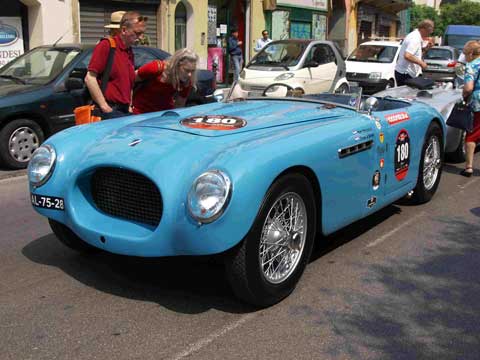
Talbot Lago Sport, circa 1949.
Two Talbots (French Talbots entered by Tony Lago) but both retired. Dreyfus, who would later establish a famous restaurant in New York City, did better with a new V12 Delahaye in 1938, finishing fourth overall, while a second Delahaye finished seventh. A Talbot made it as well, finishing fifth. It was a good year for the French. There was no race in 1939 and the 1940 event was a shortened race won by the BMW team. France was to fall to Germany later that year.
Post War French Cars at the Mille Miglia
In a nutshell there were far too many French entries from the 1952 to 1957 to list here, so we’ll only highlight some of the many successes obtained at the cost of small Italian racecar builders. From 1947 to 1951, there was nothing heard from France. They started to arrive in 1952, tiny things with strange bodies and even stranger engines. The Dyna Panhard won the International GT category; Redele and Pons in their Renault won the 750cc Sports category; another Dyna-Panhard won the International Sport 750 cc category. In 1953 the results were virtually identical, though the names of the classes had been changed slightly. In 1954 Renaults were one-two-three in the special touring series for 750cc cars, Panhards the same in the 750cc International Sports Category. While there is some truth that these classes may have been created for the cars, there is more truth in the fact that they did so well, with overall times close to 1600cc Porsches.
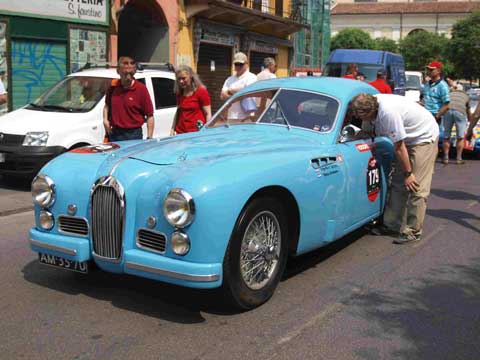
Talbot Lago Sport, circa 1950.
These class wins continued unabated in 1955 with the addition of a Citroen 2CV which won the 500 cc sub (mini car) class. In 1956 the Dauphines made their appearance and won the Special Grand Touring class while the Deutsch Bonnet, also appearing for the first time, won the Special GT 1100 class.
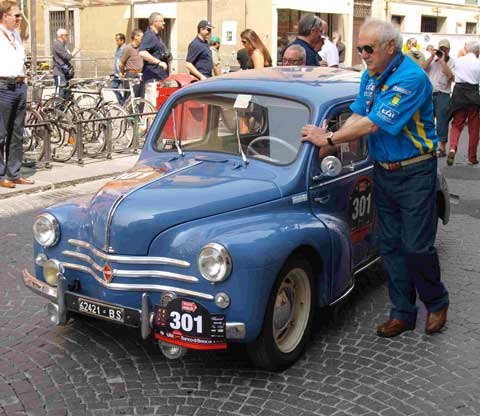
Renault 4CV.
The 24th and last Mille Miglia saw the emergence of the 750 cc Fiat-Abarth Zagato, which placed one through three in the 750 Special GT class normally the property of Panhard and Renault. D.B. and Renault did well in the 1100 cc class, however, with the D.B. taking first in class. Then it was over for everyone.
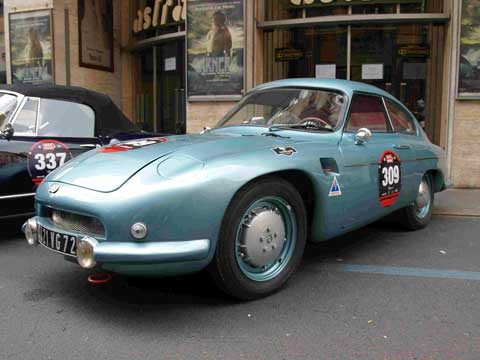
1957 D.B. GT HBR5.
Overall, during the life of the event, French cars participated in more races and won more classes than any other foreign entrees, including Mercedes Benz, MG, Austin-Healey and Frazer Nash.
nice pictures gr martin .bertels
… and finally 3 top level articles (not only nice photos of Italian landscapes). Alessandro did really a good job. When he will also comments his photos?